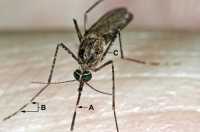Author Interviews, HIV, University of Michigan / 15.07.2019
Barriers to PReP Therapy for HIV Prevention
MedicalResearch.com Interview with:
Rogério Meireles Pinto, LCSW, Ph.D.
Professor and Associate Dean for Research
University of Michigan School of Social Work
MedicalResearch.com: What is the background for this study?
Response: In order to decrease the rate of HIV infection, interventions to scale up PrEP will need to address identified barriers at multiple ecological levels. In the past decade, interventions proposed to address PrEP implementation barriers were limited to one ecological level or another (e.g., individual or community). The failure to consider interventions targeting multiple ecological levels simultaneously may help explain why PrEP implementation is lagging. This failure is also due to methodological limitations of PrEP implementation studies.This high-quality paper presents a thorough and theoretically grounded review of original research on HIV Pre-Exposure Prophylaxis (PrEP) implementation in the U.S.
(more…)




























